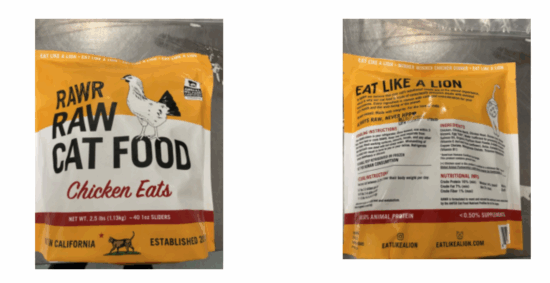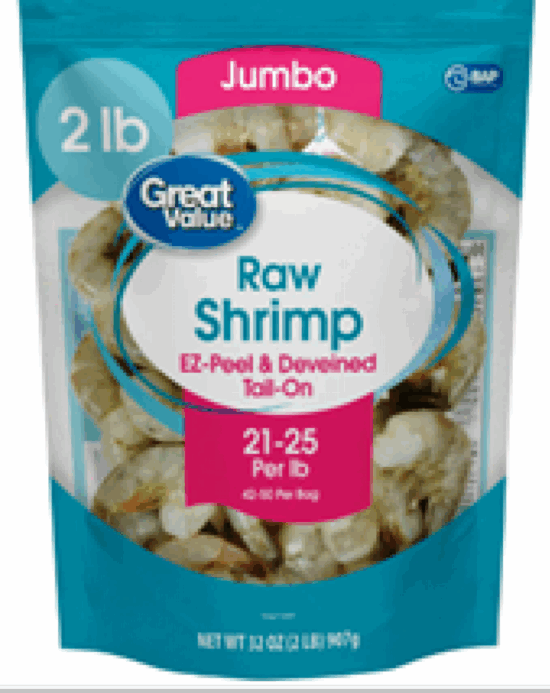Following up on a case of H5N1 Highly Pathogenic Avian Influenza in a cat, testing performed by the Food and Drug Administration has shown a link between the strain of H5N1 virus detected in the cat and in certain lots of RAWR Raw Cat Food Chicken Eats, a product the cat consumed before falling ill.
The agency is continuing to investigation bird flu in cats, but has already found that certain lots of RAWR Raw Cat Food Chicken Eats sliders tested positive for H5N1. The affected lots are Lot CCS 25 077 with the Sell By date of Sept. 18, and Lot CCS 25 093 with the Sell By date of Oct. 03.
“The San Francisco Department of Public Health (SFDPH) was notified a cat that ate product from Lot CCS 25 093 became ill with H5N1 and was euthanized,” according to the FDA warning. “After initial polymerase chain reaction (PCR) testing of the open product sample from Lot CCS 25 093 collected from the pet owner by SFDPH detected H5N1, confirmatory PCR testing and subsequent whole genome sequencing (WGS) of a diagnostic sample from the cat and the open product sample from Lot CCS 25 093 were performed by USDA National Veterinary Services Laboratories (NVSL).”
The FDA collected and tested two retail samples of the same RAWR Chicken Eats product with a different lot number — CCS 25 077 with the Sell By date of Sept. 18. Both samples were positive for Influenza A Virus, and WGS was performed on one sample, which was also positive for H5N1.
The NVSL testing of the cat, Lot CCS 25 093, and Lot CCS 25 077 identified the H5N1 as genotype B3.13. The B3.13 genotype bird flu virus has previously been found in other brands of raw poultry-based pet foods that were associated with the illness or death of cats.
H5N1 is a virus that can cause illness and death in wild birds, poultry and mammals such as domestic cats and large felids, like panthers, bobcats and mountain lions. Dogs can also contract HPAI, although they usually exhibit mild clinical signs and low mortality compared to cats. At present, HPAI has not been detected in dogs in the United States, but there have been fatal cases in other countries. The USDA’s Animal and Plant Health Inspection Service maintains a list of animals that have tested positive for the virus.
Animals who are very young, very old, or have weak immune systems are especially at risk of contracting HPAI.
According to the American Veterinary Medical Association you should seek veterinary care if your cat or dog appears to have any of the following signs:
Fever
Lethargy
Low appetite
Reddened or inflamed eyes
Discharge from the eyes and nose
Difficulty breathing
Neurologic signs, like tremors, seizures, incoordination, or blindness
While no human H5N1 infections have been identified among people from handling raw pet food products, humans can become infected if active virus gets into their eyes, nose, or mouth. It is important for people to wash their hands after handling any pet food products and sanitize contact surfaces.
RAWR Raw Cat Food Chicken Eats, Sell By 09/18/26, is sold frozen in 2.5-pound resealable plastic bags containing 40 1-ounce sliders. The product is sold in retail stores nationwide and online. The bags are yellow and white with black lettering. This product is also marked with lot code CCS 25 077, printed in the center on the back of the bag.
RAWR Cat Food Chicken Eats, Sell By 10/03/26, is sold frozen in 2.5-pound resealable plastic bags containing 40 1-ounce sliders. The product is sold in retail stores nationwide and online. The bags are yellow and white with black lettering. This product may also be marked with lot code CCS 25 093.
(To sign up for a free subscription to Food Safety News, click here)



